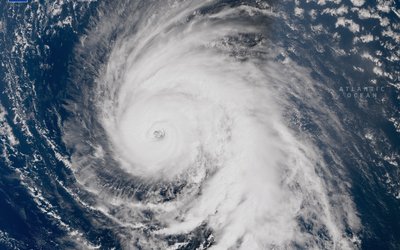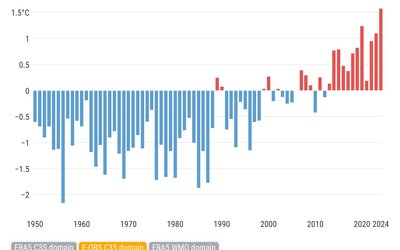
Infographic: The global methane budget over the period 2010-2019 (source: Global Carbon Project)
Methane emissions are receiving increasing policy attention today, and not without reason.
Powerful greenhouse gas
When comparing the impacts of methane (CH4) and carbon dioxide (CO2), two things are important. First, methane is a much more powerful greenhouse gas than carbon dioxide. Second, the residence time in the atmosphere is much shorter for methane than for carbon dioxide. As a result, the contribution of methane emissions in the past to global warming decreases in time, simply because these emissions are gradually removed from the atmosphere by natural processes. Over a period of 100 years the same amount of methane as carbon dioxide can warm the Earth about 30 times more. Over a period of only the first twenty years after release, the global warming potential of methane is more than 80 times the potential of an equal amount of carbon dioxide. The longer the future time scale you look at, the lower the impact of methane already released into the atmosphere. The other side of the story is that if you would like to slow down global warming quickly, a reduction of methane emissions is very effective.
Effective mitigation
Reducing methane emissions at the same rate as carbon dioxide is much more effective at mitigating global warming on a relatively short time scale of, say, the next few decades. It makes sense, therefore, to pay particular attention to ways to reduce methane emissions now that global warming has already almost reached the 1.5°C target of the Paris Agreement and experts doubt whether the target of not exceeding 2°C can still be achieved.
Two-thirds anthropogenic
At least two-thirds of global methane emissions are now attributable to anthropogenic sources. These sources include fossil fuel production and use, agriculture and waste, and interventions in wetlands and rivers such as dams and reservoirs. Emissions from agriculture and waste, including landfills, are about twice as high as those from fossil fuels.
Trend: increase
Anthropogenic methane emissions have increased substantially from 2000 to 2020. This increase arises largely from China, South and SouthEast Asia, and the Middle East. Europe stands out as the only region where methane emissions have decreased from 2000 to 2020. The differences between regions at lower and higher latitudes are notable: the regions at lower latitudes, the tropics, contribute about 60% - 70% of the total global increase in methane emissions over the past two decades, while emissions from higher latitudes are stable or have slightly decreased. Mid-latitudes are responsible for the additional 30% - 40% increase in global emissions.
Source: Jackson et al., 2024. Human activities now fuel two-thirds of global methane emissions. Environmental Research Letters 19, 101002.








